To view previous releases, select one from the dropdown box:
Currently displaying information released on: September, 2024
BUSINESS OPENING AND CLOSING, JUNE 2024
Monthly (June 2024 vs May 2024, seasonally adjusted)
The number of active businesses in Nova Scotia declined 0.40% from May 2024 to June 2024 (going down to 20,784 active businesses).
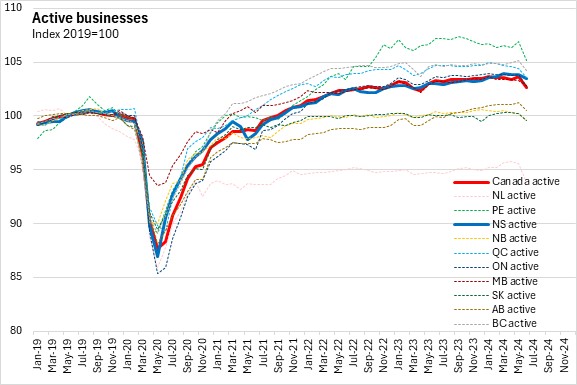
Nationally, active businesses were down by 0.96%. All provinces reported lower numbers of active businesses in June 2024 compared with May 2024. The largest decline was reported in Newfoundland and Labrador while Nova Scotia had the smallest decrease.
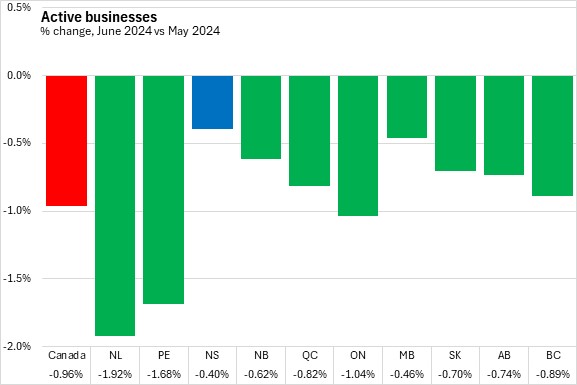
A business will be classified as 'opening' if it had no employment in the previous month and then has employment in the next month. A business is 'closing' if it had employment in the previous month and no employment in the current month. For opening and closing, the reason could be a permanent change (i.e. business exit) or temporary for reasons such as seasonal operations, capital maintenance or restructuring. Continuing business are those that had employment in both the current and previous month. Active businesses are the sum of continuing and opening business in the current month.
The rate at which business either opened, continued or closed can be examined to see how the number of active businesses has changed. The calculation for the opening, continuing and closure rates are based on the number of active businesses in the previous month.
Most businesses continue operating each month. In June 2024, Nova Scotia's business continuing rate was 95.6%, above the national average (95.1%). Québec reported the highest business continuing rate (96.2%) while Newfoundland and Labrador (94.3%) reported the lowest.
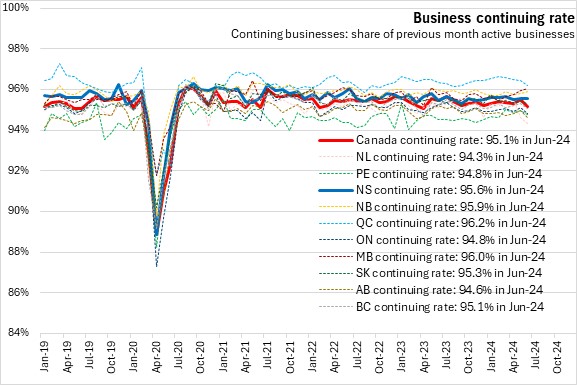
Nova Scotia's business opening rate was 4.3% in June 2024, just above the national average at 4.2%. Alberta had the highest business opening rate (4.7%) while Québec had the lowest (3.3%).
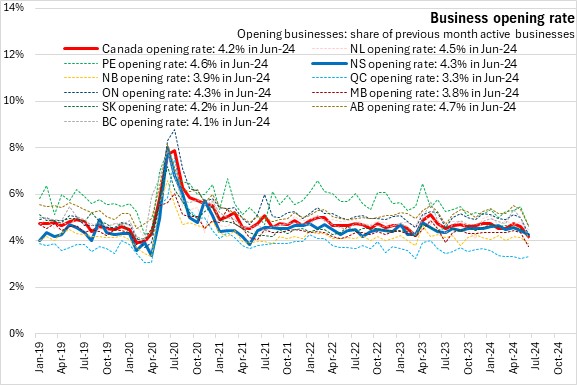
Nova Scotia's business closing rate was 4.6% in June 2024, below the national average of 4.9%. Newfoundland and Labrador reported the highest business closing rate (5.7%) while Québec had the lowest business closing rate (3.9%).
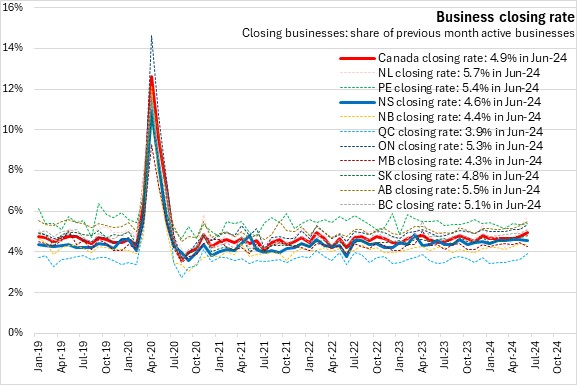
Year-over-year (June 2024 vs June 2023)
Compared with June 2023, the number of active businesses was up 0.40% for Nova Scotia. Nationally, active businesses were down 0.64% compared to June 2023. Alberta (0.58%) and Nova Scotia reported the only increases in active businesses since June 2023. Prince Edward Island reported the largest year-over-year declines in active businesses.
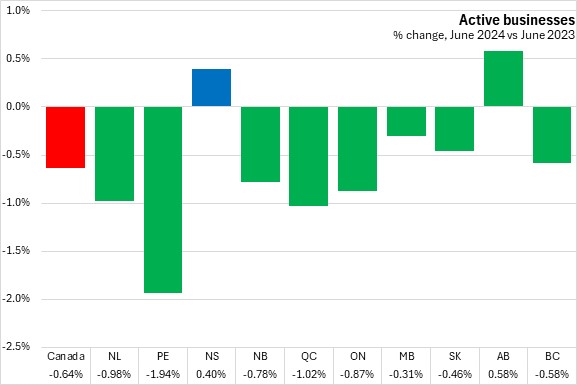
The number of active businesses in the Halifax and East Hants Census Metropolitan Area was up 1.3% from June 2023 to June 2024.
Out of 35 CMAs, 21 reported declines in active businesses over the past 12 months. Calgary reported the largest rises in the number of active businesses (followed by Halifax) while Belleville reported the largest decline.
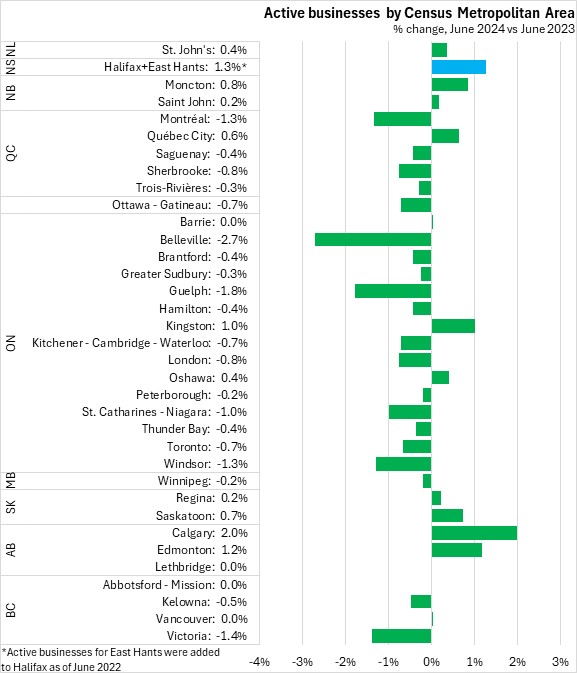
Compared with June 2023, 9 sectors saw a decline in active businesses in Nova Scotia in June 2024 with the steepest decline in mining (a small number of businesses to begin with), followed by forestry/fishing. The number of active businesses was up most in construction and arts/entertainment/recreation.
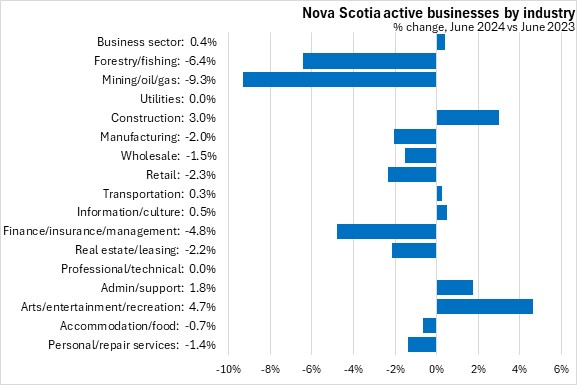
Nationally, the number of active businesses was down for 15 of the 16 business sector industries, with the largest declines in forestry/fishing and transportation . The only gain was in utilities.
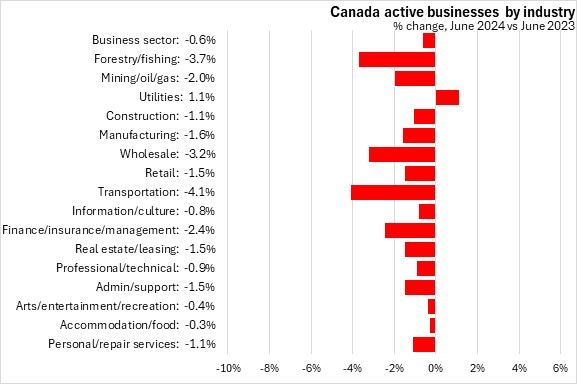
Statistics Canada has broken out specific data for tourism-related industries. Compared with June 2023, the number of active tourism-related businesses rose 0.7% in Nova Scotia as of June 2024, with gains in all sectors except food/beverage services. Travel services reported the fastest year-over-year growth in active tourism businesses in Nova Scotia.
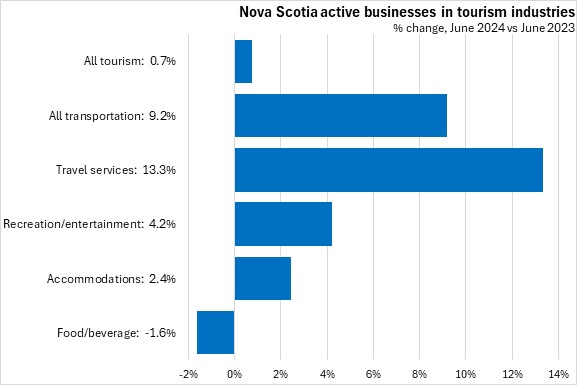
Nationally the number of tourism-related businesses decreased 0.2% from June 2023 to June 2024. There was growth in transportation, travel services and food/beverage services, offset by declines in accommodation and recreation/entertainment.
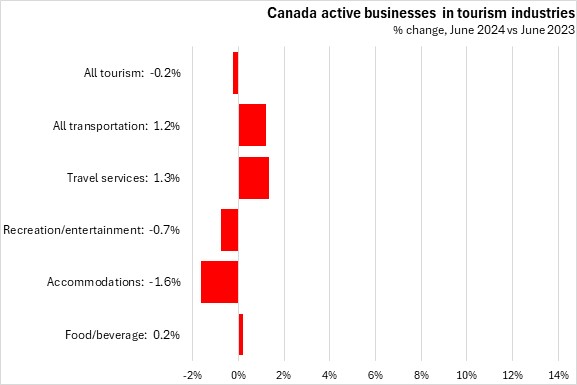
Trends
There has been a downward trend in forestry/fishing active businesses, while the decline in mining/quarrying has started again in recent months. Utilities have also been stable over the past year.
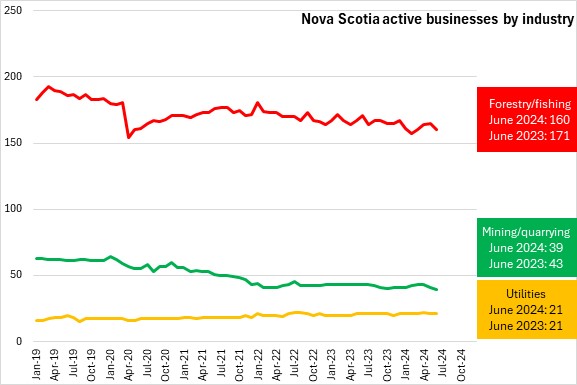
From 2020-2023, the number of active businesses in construction grew at a steady pace before levelling off in 2024. Manufacturing businesses have remained stable for the past 2 years.
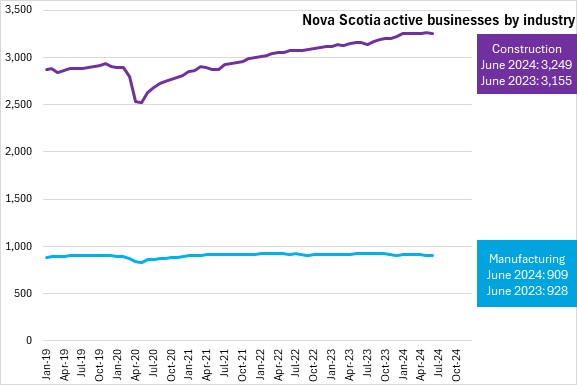
There has been recent decreases in active businesses for personal/repair and accommodation/food services in recent months while the number of active arts/recreation businesses has grown.
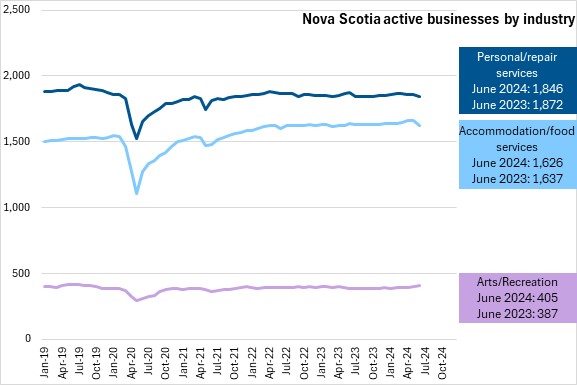
Retail businesses have declined in recent months while wholesale trade has stabilized.
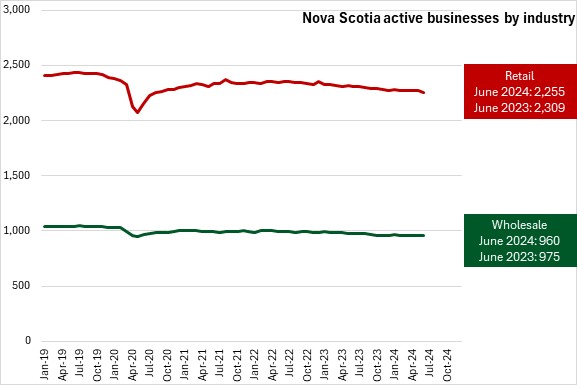
Real estate/leasing active businesses declined in recent months, while administrative/support/call centre businesses has grown. The number of active businesses in transportation has remained at similar levels since 2021.
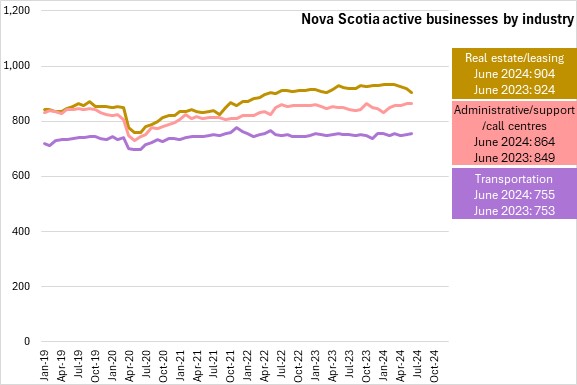
Growth in professional/technical services active businesses has slowed in recent months after steady gains in the last two years. Finance/insurance/management businesses have trended down in recent months while the number of active businesses in information/culture has been stable recent months.
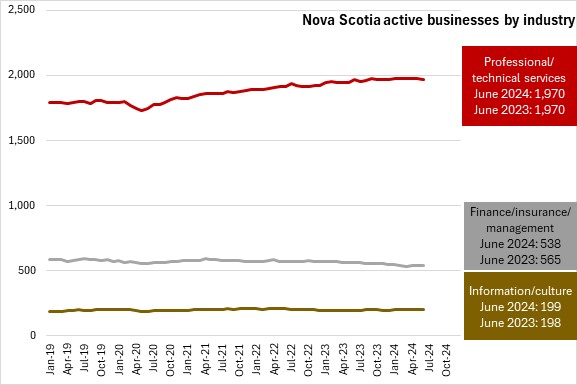
The source data is seasonally adjusted. The data June not aggregate due to firms being classified into multiple industry or geography.
Source: Statistics Canada. Table 33-10-0270-01 Experimental estimates for business openings and closures for Canada, provinces and territories, census metropolitan areas; Methodology: Business Opening and Closing
|